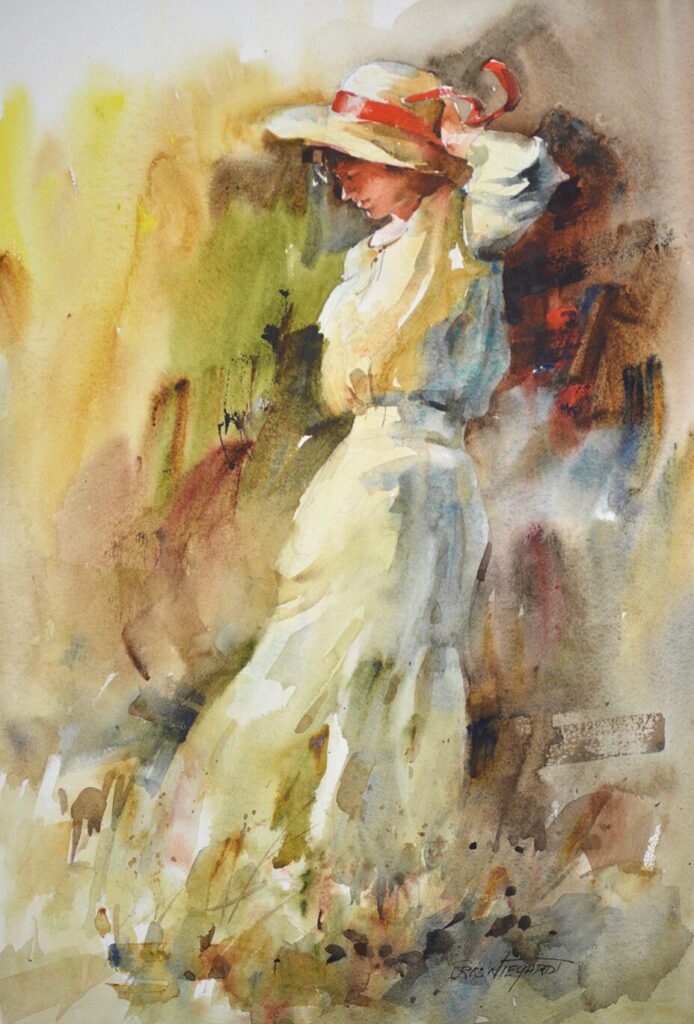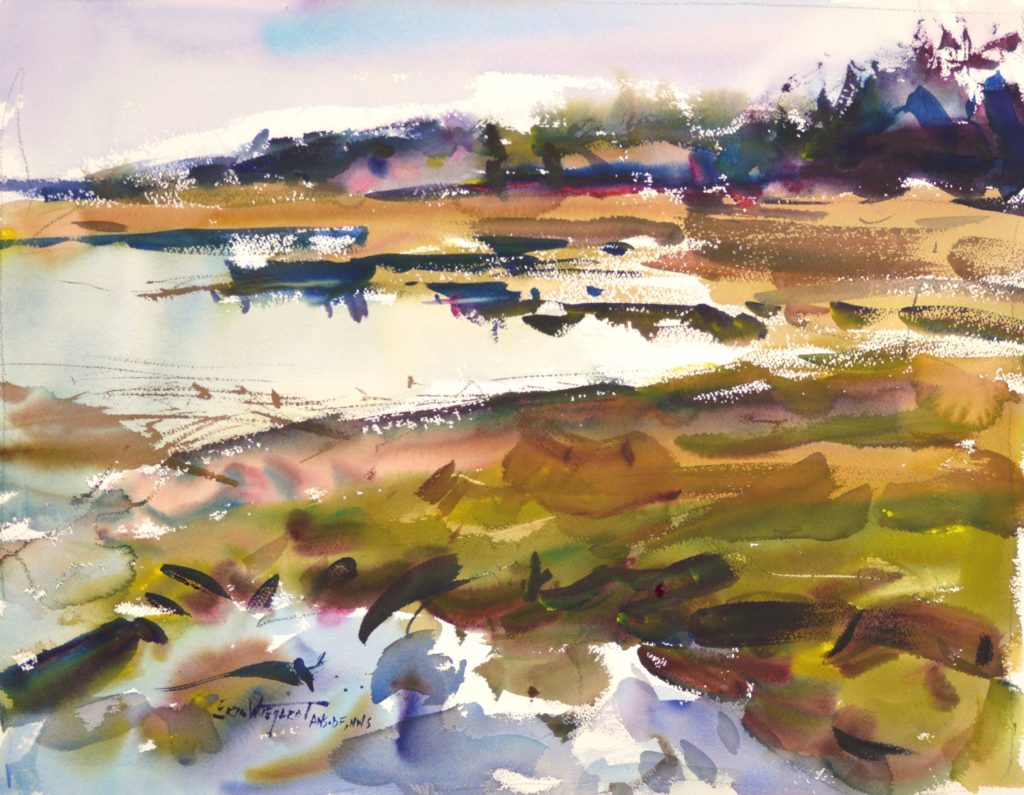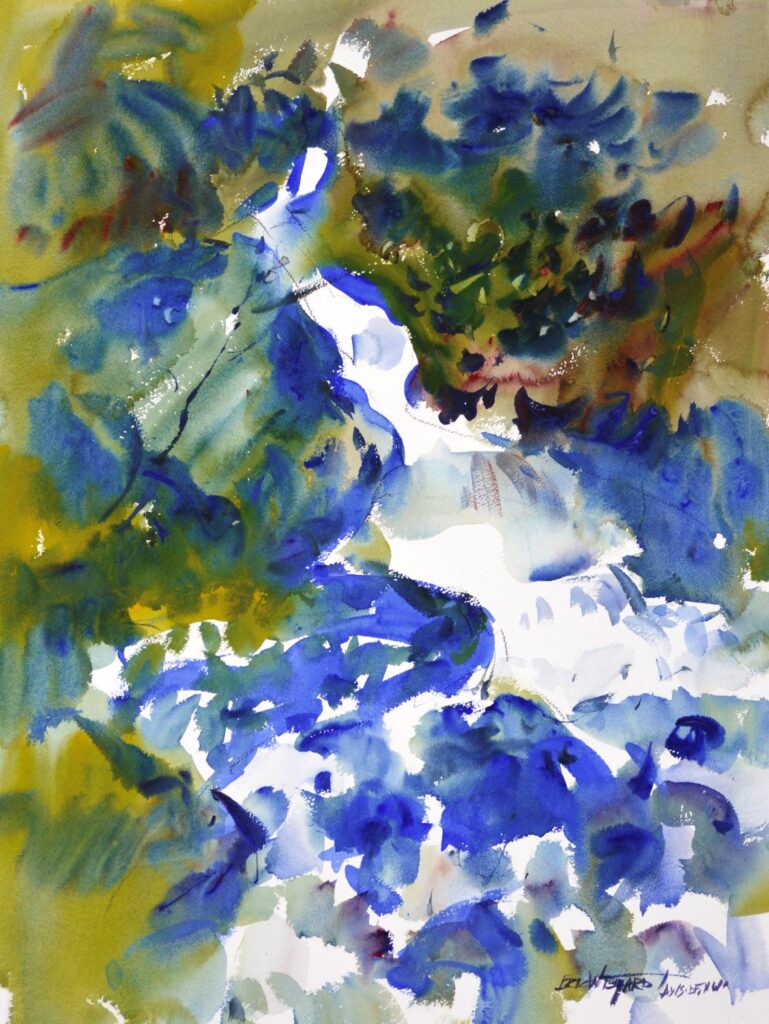Message from Eric
2025 Messages from Eric:
Eric shares his expertise and insights into watercolor painting to help you grow as an artist and find your own style. He will happily address any of your questions and talk about his own experiences gained since he started on this journey over 30 years ago.
A new article is published every month. You can also sign up to receive MESSAGE FROM ERIC as part of our Artists Newsletter HERE.
If you have a question that you would like Eric to answer, just send it to gallery@ericwiegardt.com.com with “Message from Eric” in the subject line.
April 2025

The Healing Power of Original Art
As the spring flowers begin to bloom, I’ve been reflecting on the profound impact art has on our wellbeing. Recent research confirms what many of us have intuitively known: surrounding ourselves with art significantly improves both physical and mental health.
Studies show that viewing and living with original artwork reduces stress hormones, lowers blood pressure, and creates moments of mindfulness in our busy lives. These health benefits make collecting art not just a passion, but a meaningful investment in our quality of life.
I believe the emotional connection we form with a painting is what creates this healing effect. When a particular landscape speaks to us, or a certain play of light and color resonates with our spirit, something powerful happens. That authentic connection brings a sense of peace and joy that can transform our living spaces into sanctuaries.
This month, I’m particularly excited to offer a special print of a painting very dear to my heart. “Ann” is a portrait I created shortly after art school, capturing my wife’s natural beauty – both within and without. This has been a hidden family treasure, and I’m pleased to now make it available as a limited edition print. There’s something timelessly serene about this portrait that seems to bring calm to any space it occupies, just like Ann herself.
I invite you to visit the gallery to experience our newest original works and the “Ann” print in person. As always, I’m grateful for your continued support and the joy of knowing my work brings beauty and well-being into your homes.
Warmly,
Eric
March 2025

Capturing Reflections: Inspirations from Belize
The start of 2025 has been filled with inspiring moments, especially during my recent Plein Air Workshop in Belize this January. The tropical light dancing across the crystal waters created endless opportunities to explore one of my favorite painting subjects – reflections.
Water reflections have always fascinated me as an artist. They transform the ordinary into something magical, doubling the visual interest while adding depth and mystery to a scene. In Belize, the interplay between the turquoise waters, swaying palms, and colorful buildings offered perfect subjects for capturing these reflective qualities.
I’ve returned to the studio with numerous studies and reference materials that I’m excited to develop into larger works. You’ll be seeing these Belize-inspired reflections appearing in the gallery over the coming months.
I invite you to visit the Wiegardt Studio Gallery in Ocean Park to see these new works as they emerge. There’s something about the luminosity of reflections that truly comes alive in original watercolors that simply can’t be captured in reproductions.
Thank you for your continued support that allows me to keep exploring and growing as an artist.
Until next time,
Eric
February 2025

The Real Magic of Original Art
Recently, one of our former employees (you’ll probably remember if you had framing done over the years!) Christl, came across a fascinating study that confirmed something I’ve experienced countless times in my artistic journey. Dutch neurologists discovered that viewing an original painting stimulates our brain activity ten times more than looking at a reproduction. This resonates deeply with my own experiences, especially during our painting adventures in France.
In my studio, I have numerous books filled with reproductions of paintings, yet there’s something profoundly different about standing before an original work of art. When I’m in front of the actual piece, I can truly grasp the artist’s technique and depth in a way that simply isn’t possible with a reproduction. The whole experience becomes infinitely richer.
This reminds me of what we experience with original watercolors. Each time I observe an original piece, I find myself connecting with the artist’s depth of communication on a much more meaningful level. There’s something special about seeing the true interplay of pigments, the authentic brush strokes, and the way light plays across the actual paper surface.
For those of you who collect original watercolors, you understand this intimately. It’s not just about owning art – it’s about having that direct, powerful connection with artistic expression in its purest form. This is why I’m so grateful to share my original works with each of you who have chosen to bring them into your homes.
I invite you to experience this deeper connection firsthand at the Wiegardt Studio Gallery in Ocean Park. Come see my latest collection of original watercolors and discover for yourself how different it feels to stand before an original painting. I would love to welcome you and share these special moments of artistic discovery together.
It’s wonderful to have science confirm what we art enthusiasts have felt all along – there truly is no substitute for the real thing!
Until next time,
Eric
January 2025

HAPPY NEW YEAR!
We hope you all enjoyed a festive and relaxing holiday season.
Ann and I relished the time spent with our children and grandchildren over Christmas and New Year’s. In the picture above, we were with some of our grandchildren: Anna, Naomi, Lizzy, Theo, and Moses. They bring so much light and joy to us always.
In looking back at the past year, we are so thankful for all of you who join us in our various workshops and those brave individuals who explore and travel with us! It is an honor when you purchase my art to enjoy in your homes or businesses. It is also so rewarding to see your artwork develop and to share in your successes & milestones. We cannot do what we do without you and truly appreciate your support. We hope to see you again in the new year!
Best Wishes for a prosperous & wonderful New Year,
Eric and Ann